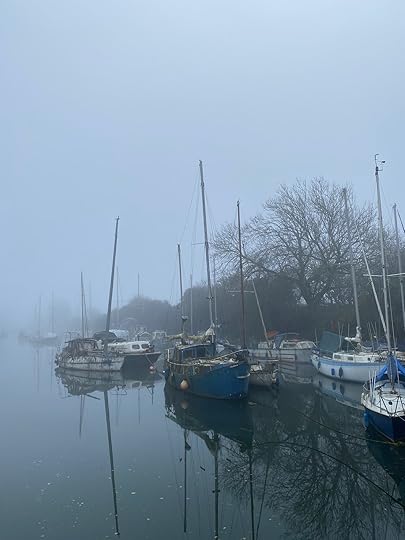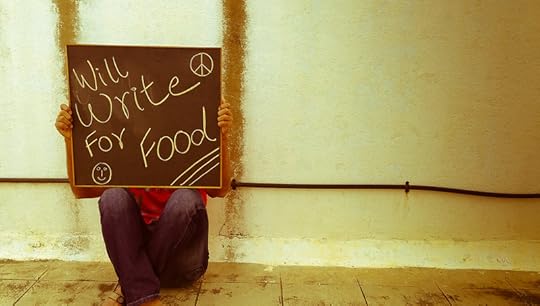Cheryl Burman's Blog: Blog posts for readers and writers, page 53
November 28, 2020
Easy steps to stronger sentences
Words of wisdom from Harry Bingham at Jericho Writers. If you haven’t signed up for their newsletter at least, or joined, then I recommend you do so. Harry is full of brilliant writing tips delivered in an easy, practical way. Here’s what he had to say recently:
Self-editing, and I want you to start by considering this sentence:
The words sound lame even to Ted.
What do you think about that? For that matter, what do you think about this one?
I quicken my step, searching the undergrowth in case anyone jumps out at me.
And let’s have a think about this one as well:
There’s a smell of damp earth and rotting vegetation
Now, ideally, you will actually pause reading to consider the sound and weight of those sentences in your head. If you encountered those sentences in your own manuscript, would you leave them or adjust them? And if you were going to make changes, what would you do?
And look: let me say right away that none of those sentences are calamitously bad. They’re clear. They communicate their meaning. There’s a bit of colour and interest in each one.
But they can all be improved, and improved easily, because the strongest location in any sentence is the very end. The second strongest location in the sentence is the very start. That means, you should try to give each sentence real weight in at least one of those places. With shorter sentences, the real kick – the purpose of the sentence – should come either first or last. Never in the middle.
With that rule in mind, let’s look again at that first sentence:
The words sound lame even to Ted.
Pretty clearly, most of the ingredients in that sentence are a little dull. The one that isn’t – the squeeze of lime that gives life to the whole sentence – is the word lame. But that word is buried away in the exact middle of the sentence, which is the least salient place to have it. So we need to rephrase the sentence as follows:
Even to Ted, the words sound lame.
And, bada-bing, the sentence springs to life. The phrase ‘even to Ted’ drained the energy out of the first version of the sentence. In the second version, they act as a tiny springboard into the rest of it. The word lame, which was lost before, now dazzles under the spotlight.
Now, OK, I recognise that’s a tiny shift, but it also took about three seconds to do. Perform that same magic over the 10,000 sentences of your novel, and you’ve made a really important difference – and done so easily.
Here’s that second sentence again:
I quicken my step, searching the undergrowth in case anyone jumps out at me.
Now you can already see why I am going to object to the current structure. The first part of the sentence is fine – that word quicken is a nice introduction. But the out at me bit at the end is just a clutter of small, dull syllables.
One easy change would be to delete the at me. It adds nothing in terms of meaning. The sentence is definitely better without them.
But as soon as you start to think like that, a more radical notion suggests itself. What about just deleting the whole last part: in case anyone jumps out at me? The scene, after all, is set in a narrow urban path at night. It’s pretty clear why the protagonist would be anxious, so perhaps we don’t need to spell it out. And if searching the undergrowth isn’t quite clear enough, we can always give that a bit of extra weight, like this:
I quicken my step, anxiously scanning the undergrowth.
We’ve deleted almost half the words from the original sentence, but we end up with something that is strong at the beginning and end (and, as it happens, in the middle too.) The slow hiss of deflation that affected the earlier version of the sentence is gone. And again, this change was easy. Notice a weak sentence ending. Start to trim it. Get a bit more radical. Boof! Done. OK, that probably wasn’t a three second change, it might have been a twenty second one, but it’s still nice, easy, anyone-can-do-it editing. Apply that kind of improvement over a whole manuscript and, again, you’ll make a massive difference.
I won’t spend much time on the third sentence:
There’s a smell of damp earth and rotting vegetation.
I’ve adopted that example just to remind us that sentence beginnings matter as well as sentence endings. In particular, I want to warn you against any sentence that starts off with there is or there are. It’s an easy crime to commit – my first drafts always have such sentences – but it’s also a waste. You’re putting the least colourful words in English at the very start of your sentence. You might as well just say ‘Blah blah blah the smell of damp earth…’
And again, it’s easy to fix. The normal fix for a there is type sentence is just to make the thing you’re talking about the subject of its own sentence – and using a better verb than is to do it. So we might end up with something like this:
A smell of damp earth and rotting vegetation floats over the path.
I don’t absolutely love that solution – though it’s definitely better than the previous version – because I’m not sure we’ve really nailed what the smell of damp earth is doing in the story. Why does it matter? Why is the character thinking about it or noticing it? Figuring that out will make the sentence better again.
But that’s a different point. What matters here is that we’ve moved A smell of damp earth to a prominent place in the sentence and we’ve murdered the blandest of all possible sentence openings. In doing so – another benefit – we’ve allowed ourselves to bring in a more interesting verb. And again, the basic change is incredibly easy and obvious once you start becoming alert to this sentence start / sentence ending issue.
Easy, huh? And powerful? A nice combination. Needless to say, and sad to say, most editing is a little more tricky than that.
The post Easy steps to stronger sentences appeared first on Cheryl Burman.
November 27, 2020
Real life and books
This morning I was listening to Woman’s Hour on BBC 4 as I drove around walking the dog – see foggy picture attached – and putting off going to the supermarket. The interviewer was talking to Jessica Ryn who has recently launched her debut novel The Extraordinary Hope of Dawn Brightside which is set in a homeless shelter, very much like the one Jessica worked in it seems. The interviewer made the point how important it is for writers to be able to bring real life experience to their work, to, essentially know what they’re talking about. She then hastily backpedalled to say going to a ‘good’ university and then writing a novel is ‘one way’ but her instinctive point was made.
It made me think how far this point should be made, going back over my own writing and how real life has impacted it.
Ten years ago to the day/month I was deeply involved in the Hands Off Our Forest campaign to save England’s public forests being sold to the highest bidder, with all the implications of not only loss of access but possibly loss of forest. A national outcry (the MP for Islington was surprised that his inner London constituents were so outraged), led to a government U-turn and our forests were saved, at least until next time. This real life experience led me to write my first books, what is now the Guardians of the Forest trilogy. Possibly I should have written about the campaign itself, with all the different personalities involved. Maybe I will one day, a bit further on… What I did write about was how outrage leads to action, to risk-taking, to taking ourselves out of our comfort zones and finding resources and strengths to battle the villains, all set within a forest I know and love.
Then there are my adult books. The Shanty Keeper’s Wife is based on somebody else’s real life and tragic experience. I can’t say, thankfully, that I know what it’s like to be an abused wife, or have an alcoholic husband – those things I had to get inside Betsy’s head to try and tease out. But what I could bring was my knowledge of the country, of the ‘bush’, of the sound of kookaburras and magpies warbling and the chill of a Jamieson morning (for I know that area a bit from spending weekends in the old gold mining town of Valhalla). Keepers is even more personal, being loosely based on family history and drawing on different bits of real people to create my characters, seeing them as I saw them as a small child. Finally, my current WIP has an historical inspiration also, in a local woman who was a respected herbalist but was tried as a witch, in 1906. My WIP isn’t a historical novel. It’s magic realism, with the ‘witch’ providing a starting point, but I have come back to my Forest setting, to the river and fields and woods, to ancient wells and to towns and villages I know.
I suspect authenticity is one of the key components of that magic factor, Voice. I’m not saying we should only write about what we know, but leveraging our own life experiences to give an edge of truth to the rest, must surely make us better writers.
And here’s the promised foggy picture, of boats moored on the canal from the River Severn
The post Real life and books appeared first on Cheryl Burman.
November 17, 2020
Widen your book’s distribution Part 2 Goodreads
Ok, so Goodreads isn’t a publishing platform but it’s a huge marketing one, and as I can’t start uploading my books onto other platforms until my KU runs out in a week’s time, I decided to do something about my dormant Goodreads account.
Here is what I learned:
1. Applying to be an author is simple. Go here to get started. Within a day or so I had a welcome email –
Hey, you’re a Goodreads Author now!Your application has been approved, and you now have access to your author dashboard, which provides you with all the tools you need to manage your presence on Goodreads.To get started, visit your author dashboard, or choose from the following topics:Fix your Book ListingsGet the right books showing on your author profile with the right coversPromote Your BooksFind new readers with giveaways and advertisingInteract with ReadersLearn how to communicate with your readers and avoid common mistakes
So I went straight to the author dashboard because that was the first link, right? Now one of the things you need to know is that not everything happens on the dashboard. But it IS where you add your books. There’s an ‘add a book’ button, which takes you to a simple form.
Hint: Have your Amazon page open because you need to do a lot of cut and pasting, including the description – why write a new one? Mostly straightforward but the problems I had were
1. the ISBN/ASIN wasn’t accepted a couple of times. However, you can upload without that, so I did exactly that (I suspect it was to do with problem 2.)
2. Because I realised I hadn’t uploaded the cover image after I’d uploaded the book – that box is sneakily off to the upper right where I didn’t think to look once I got to the bottom of the form – I managed somehow to open the form again, did the cover and then re-uploaded. Big WHOOPS – I now had two versions, one with a cover and one without.
This took me a lot longer to figure out how to fix and I have to say the Goodreads help page on this was, to me, less than helpful. However, a couple of phrases stuck in my meagre brain
– author profile
– combine these editions
It appears that in order to edit your book uploads you have to
1. go to Edit my author profile (top right)
2. scroll down past the blurb about yourself to get to a list of your uploaded books. At the top of this list, in tiny type are the magic words: Combine editions
And this button not only lets you, simply, ensure you have one only link on your page for each book BUT also – who would know?? – allows you to edit the listing. Like, upload the photo you forgot, or change the description. (Which one of the combined editions you do this to to take effect I still haven’t worked out, so I did it to all of them. Like to be thorough.)
Learnings:
1. Make sure you fill in all the boxes first time around
2. Either rely on the Amazon link to let your readers find the kindle version or audio, ie upload the paperback only OR do them all separately and then combine them as different versions of the same book. There’s very likely a more professional way to go about this but this worked
3. Know that Edit your author profile is the magic place to make things happen.
The good news is that someone was actually reading one of the books as I was doing all this, so that’s encouraging!
Here’s my Goodreads author page if you want to check it out. Don’t tell me if anything’s wrong and don’t ask me to write a blog.
The post Widen your book’s distribution Part 2 Goodreads appeared first on Cheryl Burman.
November 15, 2020
Widening your book’s distribution
As someone not keen on technology, I’ve been putting off thinking about how to maximise the reach of my books, especially when I publish Keepers early next year. But a friend on Twitter introduced me to the FB group Wide for the Win which is dedicated to helping self-publishing authors do what it says on the tin, ie widen your platforms to access more readers. It means coming off Kindle Unlimited, but that’s fine by me. So I’ve spent a thoroughly fascinating afternoon updating my dormant Smashwords account, looking at Kobo and other platforms and it doesn’t look terribly scary at all! Wish me luck, and if you’re in the same boat, take a look at the FB page. They’re a welcoming bunch of people and they also have a page for rank beginners like me. Let’s see!
 Photo credit: Theo Crazzolara on Visualhunt.com / CC BY
Photo credit: Theo Crazzolara on Visualhunt.com / CC BYThe post Widening your book’s distribution appeared first on Cheryl Burman.
November 12, 2020
Ease Draft One pain – sharing, and a tool to keep track
Last night we had a zoom meeting of our local novel group, a sub-group of Dean Writers Circle. Right now, all of us are writing first drafts which has pros and cons when it comes to sharing with a group.
The pros
* You get some great ideas as discussion about your offering evolves. As my friend Carol says – the ‘why didn’t I think of that’ type of ideas
* You can ask specific questions like, how are characters developing/what are the reader’s feelings towards them (and is this what you want?), what questions are being raised in the reader’s mind, are things too opaque or too obvious, does the story flow or does it feel jerky/disjointed? Or anything else niggling at you.
* It’s encouraging when people say how much they love this phrase or line or character. It keeps the motivation up, especially in those dreaded middle sections.
* You can be made aware of writing ‘tics’ (from too oft-repeated phrases to head-hopping) early on and hopefully avoid them as you draft.
* It forces you to keep writing. I have one group which meets weekly, and we share about 10 pgs (dble spaced) at a time, or ca 2,500 words. Not a mammoth task, but a discipline.
The cons
* If, like me, you’re continually reviewing the already written work with your own revised ideas, you are in danger of your new work only making sense in the revised context – which your critique partners haven’t read. There’s a danger of them losing the flow of the plot if this is too drastic.
* If the group doesn’t meet frequently, it’s going to take a long time to get through your book. [We overcome this by turning into beta readers when a book is finished and dedicating most of a session to that one book.]
* You have to avoid the temptation to edit other people’s work for grammar, ie technicalities which can be fixed later, as some of this work may not survive the edit process. After all, the most important thing about a first draft is to get it down!
If you’re involved with such a group, I’d love to know what the pros and cons are for you. Let me know in the comments.
Now for the tool –
I know there are very many fancy tools out there to help writers, and doubtless they work for many people. Most also cost money. But here’s something which I’ve developed over the last couple of books until I now find it working for me. It’s not a tool to help you plot your overall story but one to help you keep track of it, to give an overview, and to make draft 2 and later revisions easier.
I’m finding it very useful for my current WIP – I jot down key points for the next chapters to be written and use these to aid drafting. If the draft doesn’t turn out the way the key points said (fancy!), well, I change that column to reflect what I actually wrote and think about why, how does that affect the story going forward, AND does it have an impact on the story already written? (and note that in the relevant column).
I hope you find it helpful – and if you don’t like Excel, suspect it would work quite well in a word table also.
Draft-One-tool-1Download
The post Ease Draft One pain – sharing, and a tool to keep track appeared first on Cheryl Burman.
October 28, 2020
Two key points on the importance of structure
I was very lucky to have a conversation with Imogen Robertson, chair of the HWA, who kindly offered to give feedback to longlisted authors in this year’s short story competition. A feedback junkie, I snatched her hand off and was not disappointed.
One of the things I’ve been struggling with in one WIP is the feeling I get every time I read it that it’s soooo much better towards the end and that much of the lead up is too slow. Things happen, there’s drama, there’s conflict (outer and inner) and none of my readers have complained, or risen to the bait when I ask them outright – I’m too self-critical they kindly say.
But, you know when you know…
So, two key points (and sub-points) about structure
FOCUS – write fuller scenes but (especially in a short story) fewer of them. To borrow the trees image from one of the recommended books below, it’s important to be able to see the wood for the trees and among all the nice prose.
Every scene has to pay its way, deepening character and/or plot
TURNING POINTS – be very clear what they are and why it’s a turning point.
How does it affect your character? What changes in them, as well as for them?
Sharpen them, let them ‘breathe’ by giving them lots of space and ensuring the reader lives every bit of them with your character.
Here are some book recommendations
Story Robert McKee
The Science of Story Telling Will Storr
Into the Woods John Yorke
I have glimmerings about my worries and how possibly to solve them. Thank you Imogen and HWA.
The post Two key points on the importance of structure appeared first on Cheryl Burman.
October 13, 2020
Another story read by Jacqueline Belle

Thrilled that the wonderful Jacqueline Belle has chosen to read another of my stories on her YouTube channel. This time it’s The Moon’s Silver Path. Go here for more detail and to listen to the story. It’s only a few minutes!
The post Another story read by Jacqueline Belle appeared first on Cheryl Burman.
October 11, 2020
Most popular posts
Because these posts have proved popular, I’ve pinned links here to make them easy to find. Enjoy!
Show not Tell:
http://cherylburman.com/show-not-tell-the-best-explanation-yet/
Wisdom from Margaret Atwood:
http://cherylburman.com/wisdom-from-margaret-atwood/
Ellen Hayward – the last witch trial:
http://cherylburman.com/ellen-hayward-the-last-witch-trial/
The summary every writer should learn by heart:
http://cherylburman.com/the-summary-every-writer-should-learn-by-heart/
Words to be wary of – ‘weasel words’
http://cherylburman.com/words-to-be-wary-of/
The post Most popular posts appeared first on Cheryl Burman.
October 9, 2020
Six key take-aways for successful blogging
I recently attended Jane Friedman’s webinar on blogging, to see how to do it better. Here are my six key take-aways
1. Know your target audience – research the needs and interests of the people likely to be also interested in your book and blog about those things (sounds obvious but how often do we blog about what’s of interest to us, ie ourselves … guilty as charged)
2. It’s a long term and full-on investment. Jane says blog every day … wow!
3. Own your own voice and have an opinion! (No problem there)
4. Variety – interviews, Q&As, challenges, your reading list, how you research etc …
5. Layout is key to retain interest – lots of white space
6. Use visuals – so here’s one for you!
 Photo credit: itsmeritesh on Visualhunt.com / CC BY-SA
Photo credit: itsmeritesh on Visualhunt.com / CC BY-SAThe post Six key take-aways for successful blogging appeared first on Cheryl Burman.
Blog posts for readers and writers
If you want to make sure to not miss out, much of this first appears in my monthly newsletter - you can sign up here (and get a free book)
https://cherylburman.com/by-the-lette...
Enjoy! ...more
- Cheryl Burman's profile
- 75 followers



